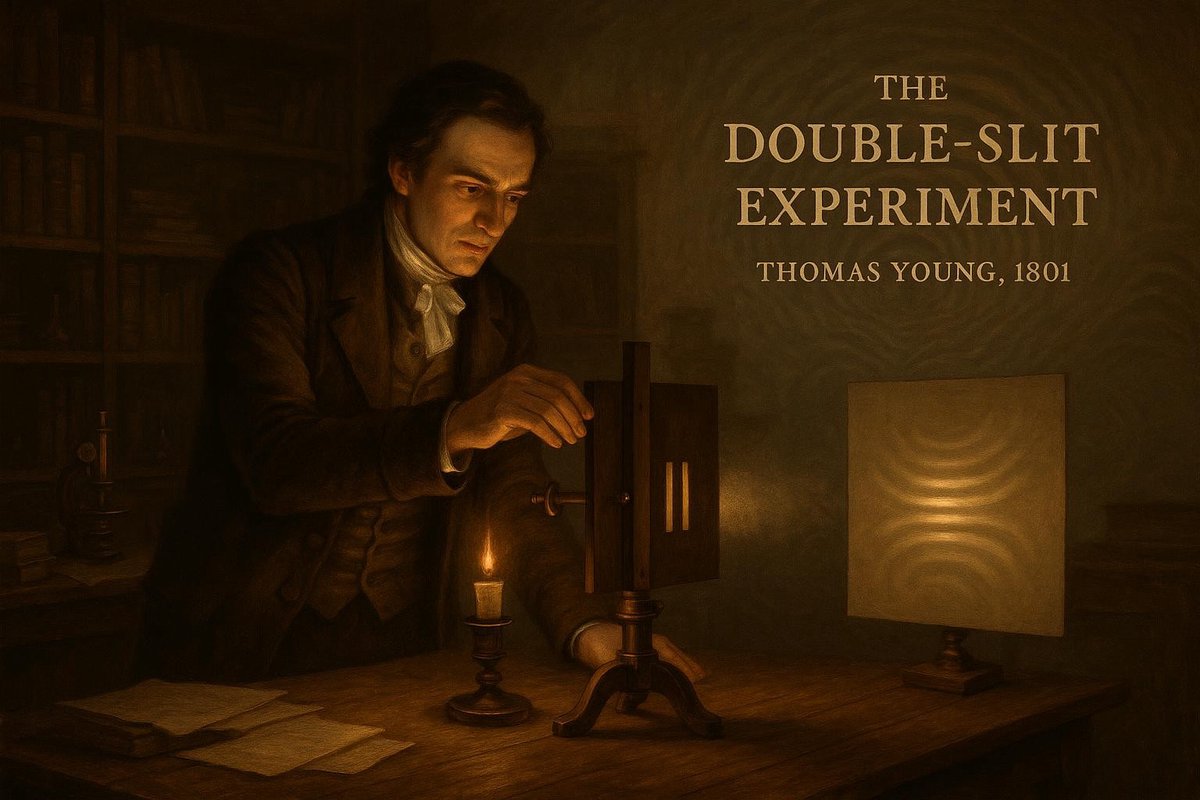
Curious About Light’s Dual Nature?
Imagine standing on a beach, watching waves crash against the shore. Each wave rises and falls in rhythmic beauty. What if I told you that light behaves in a similar wave-like manner? It’s not just an illuminating source but a symphony of physics at play. The Double-Slit Experiment, conducted centuries ago, revealed this dual nature of light, challenging our perception of reality.
Hypothesis & Context
The year was 1801, and Thomas Young was on the brink of discovery. The prevailing belief was that light consisted of tiny particles, following Isaac Newton’s corpuscular theory. Young, however, proposed a different hypothesis: light exhibited wave-like properties. At that time, many scientists clung to the particle theory due to Newton’s towering presence in science.
- Young’s idea was radical: he hypothesized that if light were a wave, it would create an interference pattern when passed through two closely spaced slits.
- This contradicted the notion that light traveled in straight lines as particles.
- The concept of light as a wave was not new but lacked empirical support and was overshadowed by Newton’s ideas.
Young’s experiment aimed to provide concrete evidence, setting the stage for a groundbreaking revelation.
Setup & Method
Imagine a dimly lit room, with only a beam of light directed at a barrier with two narrow slits. Young placed a screen behind this setup. This simple yet elegant design was set to revolutionize science.
- He shone light through the slits, expecting to see two distinct bands on the screen.
- Instead, he observed multiple light and dark fringes, akin to the ripples formed when two stones are thrown into a pond.
- These interference patterns provided evidence that light behaved as a wave, causing regions of constructive and destructive interference.
The experiment was meticulous, requiring precise alignment and control over light sources to ensure the validity of his observations.
Results & Reactions
The results were nothing short of revolutionary. As Young analyzed the interference patterns, he knew he was witnessing a fundamental shift in science.
- The fringe patterns suggested that light waves were interacting through interference.
- “The experiments I am about to relate…may afford us some insight into the nature of light itself,” Young declared.
- The scientific community was initially skeptical, as Young’s results challenged the dominant particle theory.
Over time, as more experiments confirmed his findings, Young’s work laid the cornerstone for wave theory, influencing later developments in quantum mechanics.
Implications
The implications of Young’s experiment extended far beyond his lifetime. It was a precursor to the dual nature of light, a cornerstone in quantum mechanics.
- The experiment set the stage for understanding electrons and photons’ behavior, showcasing their wave-particle duality.
- It prompted scientists like Einstein to explore light’s quantum properties further.
- Today, this duality underpins technologies like lasers and quantum computing.
Young’s bold hypothesis and methodical approach not only altered our understanding of light but also paved the way for modern physics.
In retrospect, the Double-Slit Experiment was more than an investigation into light; it was a quest to unravel the very fabric of reality.
Fuel Someone Else’s Curiosity
Curiosity can spark the brightest fires of discovery. Share this story and inspire someone else to explore the wonders of science. Who knows? The next groundbreaking experiment might be just a curiosity-fueled question away. Embrace the mystery!

Leave a Reply